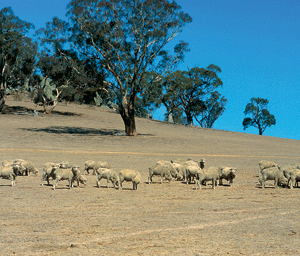
|
Published: 14 November 2011
Call to create marine reserve network around Antarctica
A new coalition of environmental and conservation groups, the Antarctic Ocean Alliance (AOA), called on the Convention on the Conservation of Antarctic Marine Living Resources (CCAMLR) – which recently met in Hobart – to establish the world’s largest network of marine reserves in the oceans around Antarctica.
AOA’s proposal – which builds on the CCAMLR commitment to create a network of marine protected areas in the Southern Ocean – is to establish no-take marine reserves and marine protected areas in 19 ocean areas around Antarctica.
The areas recommended by the AOA for protection include the Ross Sea, Antarctic Peninsula and Weddell Sea.
According to the Alliance, such a reserve network would represent the most comprehensive ocean protection regime of its kind on the planet.
‘If adopted, the Antarctic Ocean Alliance proposal would add to the land-based protection already in place for Antarctica to include the region’s unique ocean habitats as no-take areas – a lasting legacy for future generations’ said AOA Coordinator Steve Campbell.
‘While still one of the most pristine environments left in the world, the ocean around Antarctica is fast attracting industrial fishing interests particularly for long-lived toothfish and krill, which could have devastating impacts,’ Campbell said.
‘At a time when climate change impacts are increasing, now is the time to ensure we protect the unique ocean environments around Antarctica.’
Also speaking at the AOA launch were Evan Bloom, head of the US CCAMLR delegation; polar explorer Eric Phillips; Chief Executive Officer at the Australia’s Antarctic Climate and Ecosystems Cooperative Research Centre, Tony Press; and US oceanographer Sylvia Earle.
Sylvia Earle said by videolink: ‘I want CCAMLR to establish a comprehensive network of marine reserves in Antarctica as a legacy for all time.’
AOA’s members are Greenpeace, the Antarctic and Southern Ocean Coalition (ASOC), Mission Blue, The Last Ocean, Oceans Five, Forest & Bird and ECO (NZ), as well as associate members, the Natural Resources Defence Council (NRDC) and Oceana.
The recent CCAMLR meeting highlighted the fact that many of its 25 member states wish to protect commercial interests in Antarctica, including the use of unsustainable fishing methods.
‘As CCAMLR has set a timeframe for a representative system of marine protected areas by 2012, there is now an unprecedented window of opportunity to protect these oceans before large-scale fishing takes its toll,’ says Steve Campbell.
Antarctica’s ocean environment is home to nearly 10 000 highly adapted species, many unique to the region, including Adélie and emperor penguins, Antarctic petrels., minke whales, Ross Sea killer whales, colossal squid and Weddell seals.
Source: AOA




